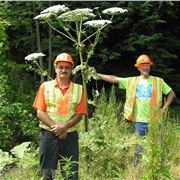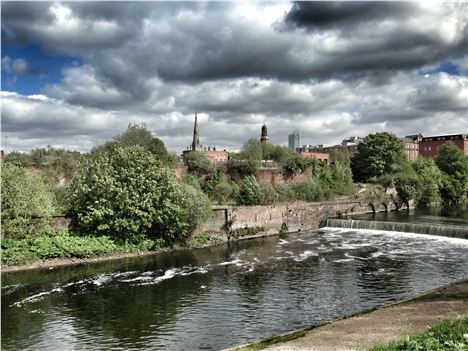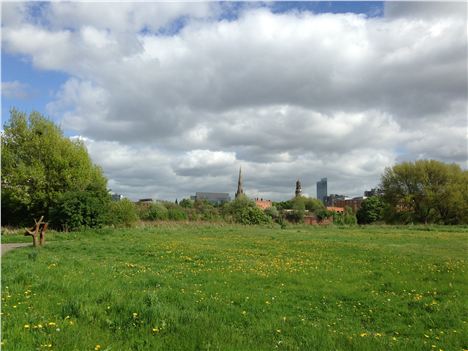WE’RE going to do these every week.
The first Manchester view is from Salford into Manchester.
The photograph is taken from the crazily extended meander of the river that creates a mini-Manhattan shape in the city centre.
Look at this vista.
The city is magically turned into a county town somewhere in the shires with dreaming spires and surging river and a sudden predilection for UKIP.
The towers and spires belong to Sir Robert Smirke's St Philips’ church (the one with the clock) and Matthew Hadfield's Roman Catholic Salford Cathedral of St John, with the second most beautiful spire in Greater Manchester. The first church is from 1824, the second opened in 1848.
Sir Bob S also designed the British Museum in a big southern town. Hadfield, more modestly, was also the designer with a man called Weightman, of St Mary's RC church, aka The Hidden Gem, just off Albert Square in the city centre.
Beetham Tower peeks out in the background of the picture, as it does wherever you wander in Mancunia - unless you're on an underground tour.
The weir, the manmade waterfall in the foreground, dates from the second half of the nineteenth century. Just behind in the river bank are four huge arches. These seem to be associated with a reservoir placed on the higher land above in the early part of the nineteenth century. The scale of the stone used on the arches makes them appear older, and render a suitably antique air to the view - like lost fragments from some mighty Roman city.
Up until the late 1800s the area here, Adelphi, was one of the most desirable places to live in the region and the area was chocker with big houses and splendid gardens reaching down to the river.
Then as industry spread the river became choked with human and industrial effluent so guess what, the working class took over from the middle class and terraced houses ruled the roost.
These in turn were replaced by sixties and seventies low-grade housing and blocks of flats. The only other big building in the view in our photograph is the former Salford Royal Hospital on the right of the picture. In a fine wheel gone full circle manner, this is now converted into middle-class apartments.
The photograph is taken from the crazily extended meander of the river.
 Weird life forms and hogweedThe area here is known as The Meadows. In the early 1800s it was where cricket really established itself in the region. At break of day cricketers would meet to play 'at the Adelphi, a green field opposite The Crescent in Salford. The team was called 'The Aurora' for they met at dawn to play cricket'.
Weird life forms and hogweedThe area here is known as The Meadows. In the early 1800s it was where cricket really established itself in the region. At break of day cricketers would meet to play 'at the Adelphi, a green field opposite The Crescent in Salford. The team was called 'The Aurora' for they met at dawn to play cricket'.
The Cresent is where more posh houses were located above the meander. Some still survive.
The Meadows should be Manchester and Salford's green lung, a mere mile from Manchester Town Hall. It might be a flat area but it’s very peaceful, defined by the great sweep and return of the river and adjacent to Peel Park. If a bridge were to be thrown across from Chapel Street to The Meadows and the bridge from The Meadows to Peel Park re-opened then the twin cities would have a remarkable resource - if enough money could be found to create a park to the standard of the Royal Parks in London.
Dreams of course, although there was just such an idea, with Salford Central Regeneration and North West Development Agency, before the Bonfire of the Quangos four years ago.
Still a walk down there (access down Adelphi Street, Silk Street, Blackburn Street, Linen Court and over the footbridge) is interestingly urban with the prize of the rural Meadows at its conclusion.
Get down by the river and you might see kingfishers, herons and brown trout. You will see Giant hogweed, Canada effing Geese, and several novelty footballs floating by, clearly released in some sinister upstream programme to flood Salford Quays and MediaCityUK with plastic spherical objects. God knows why.


















